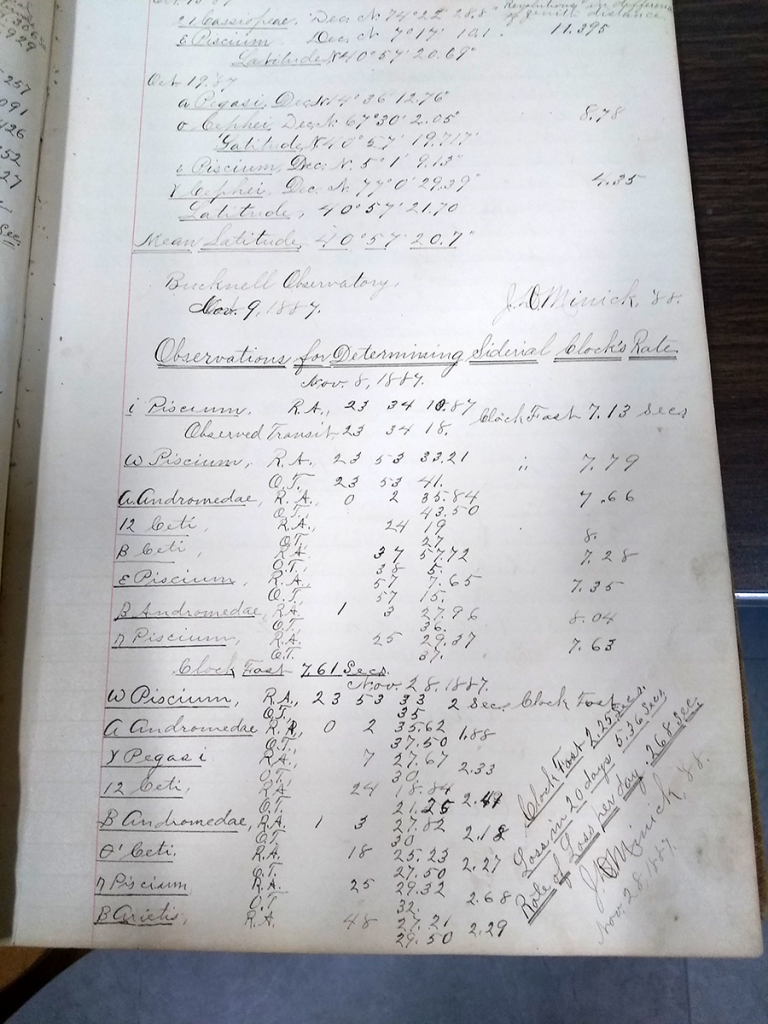
Some years ago, back in 1887, the University received a lovely Clark & Sons refracting telescope, complete with a clock drive to track the stars against the Earth’s rotation. When a shiny new toy scientific apparatus arrives on your doorstep, it’s very important to confirm that it works as intended. Here, in an old notebook, we see the original data on the clock drive’s variance from the ideal sidereal tracking rate.

“Observations for Determining Sidereal Clock’s Rate Nov. 8, 1889”
Then follows a table of stars with known right ascension and declination, then a repeated set of measurements 20 days later. “Rate of Loss per day .268 sec.” Considering the frequency with which proper polar alignment and tracking proves a nuisance more than a century later, that seems pretty good. The clock drive is long gone, of course, so we can only guess at how accurate it was and stayed throughout the decades.
It looks like these entries were by a J. D. Minick, Class of ’88. Best guess is a John David Minick, graduate of Bucknell in 1888, listed as Prof. John D. Minick of Lenoir, N.C. in the Memorials of Bucknell University, 1846 – 1896. Astronomer, apparently. Mathematician? Physicist? At this point, we’re content with the mystery.
Around the same time, Bucknell was also the home of one Jacob Henry Minick, Class of 1891. He’s listed in the link above as from Orrstown, PA, in Franklin County. Any relation?
His name lives on at the university in the form of an endowed scholarship:
“The Jacob H. Minick Fund was established by a bequest from Jacob H. Minick, Class of 1891, the income of which is to be given each year to students who, because of some physical difficulty, are forced to use crutches during all of their college work.”
There’s a story there, no doubt.